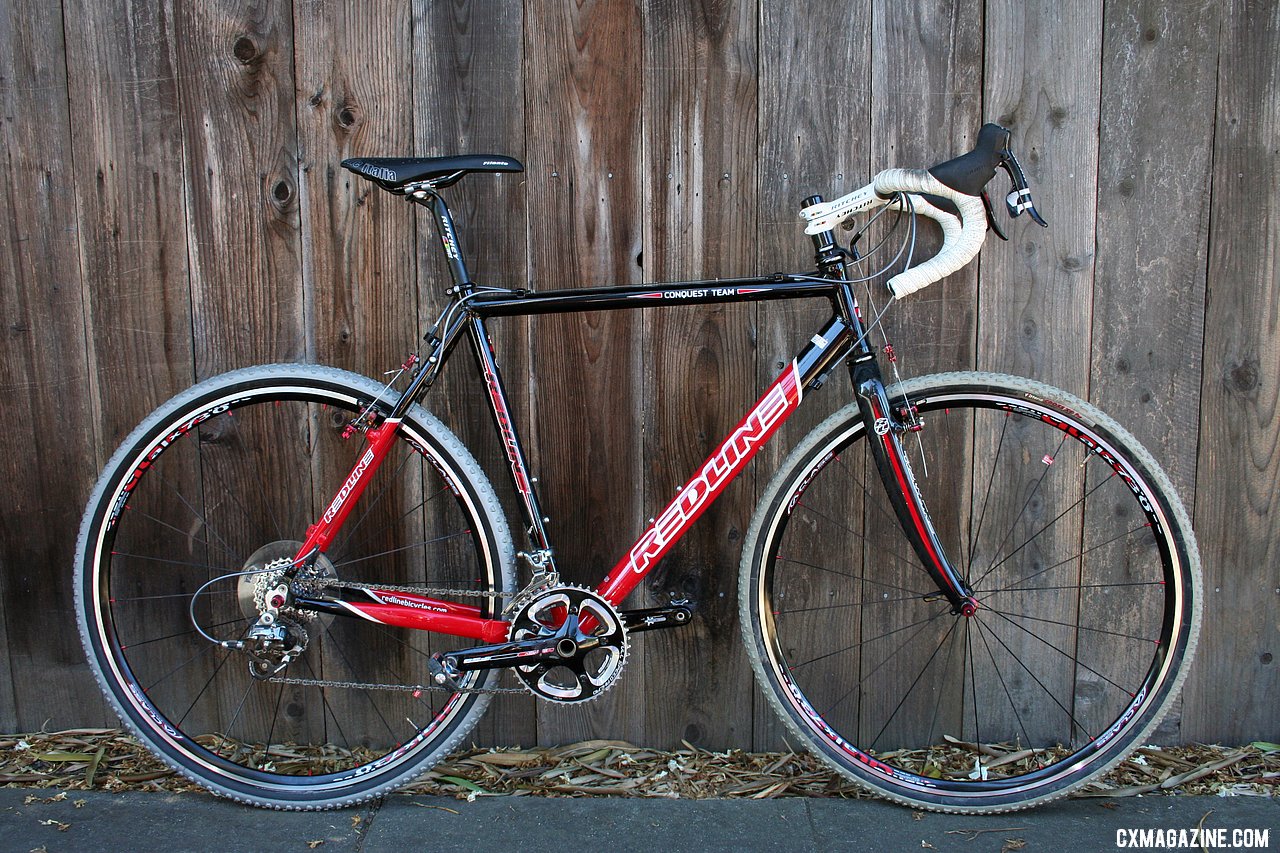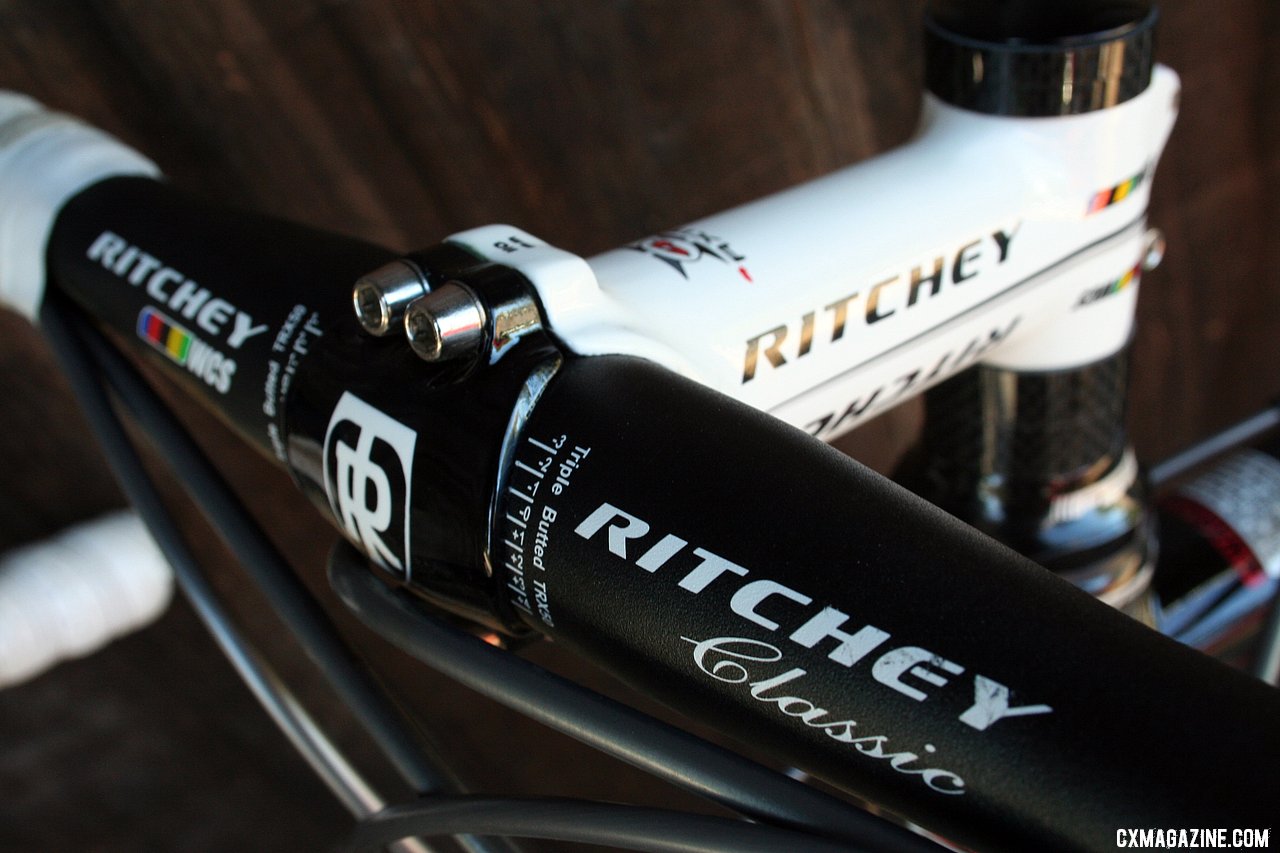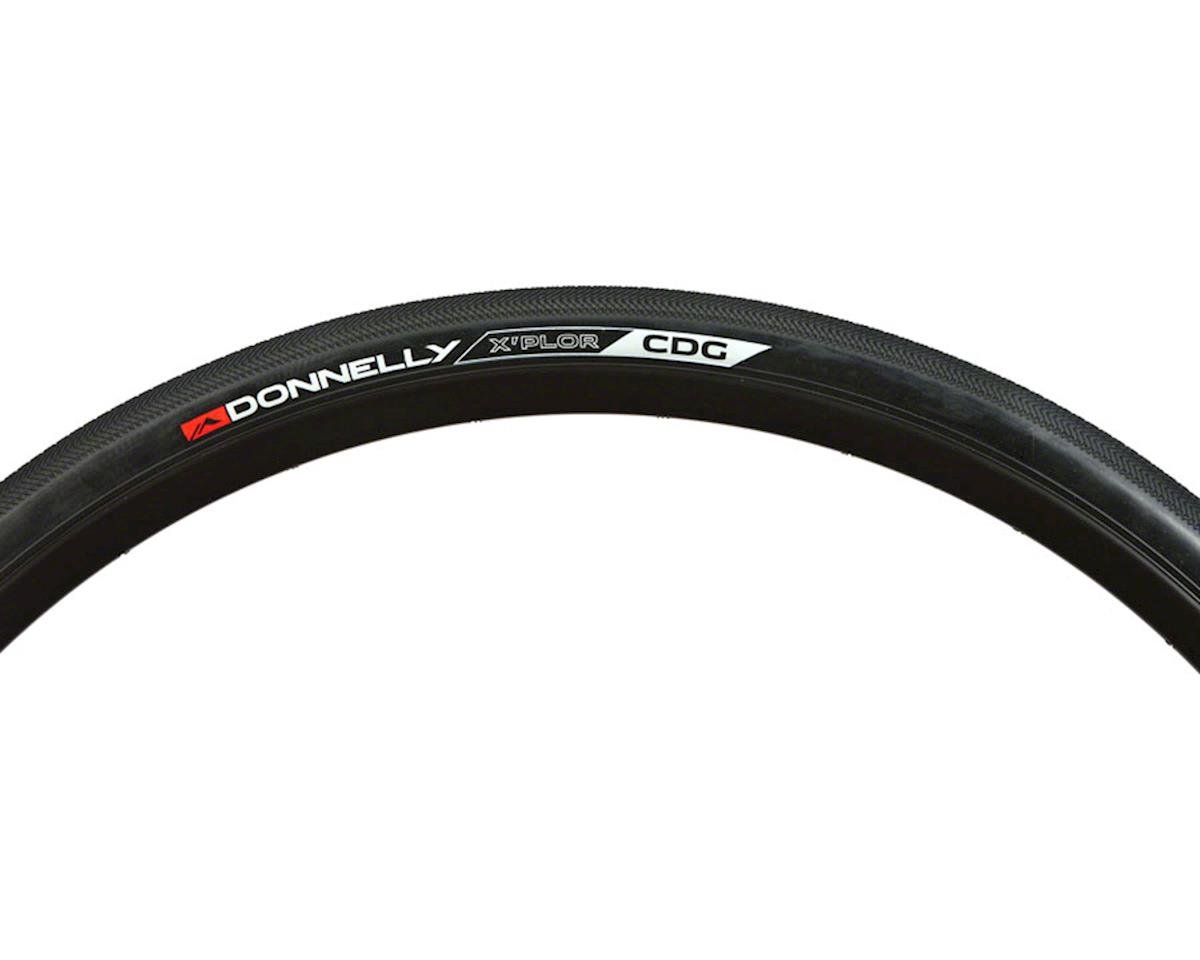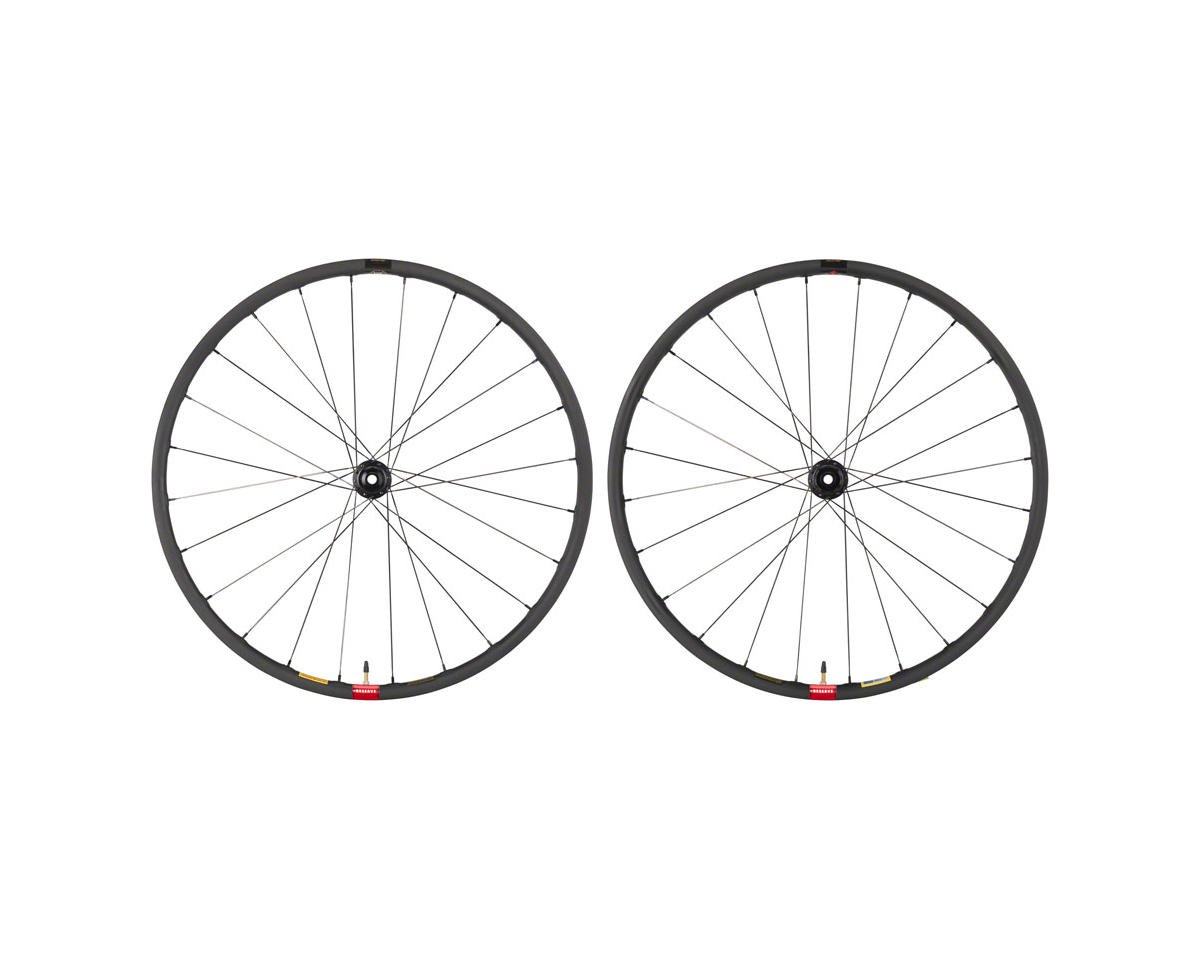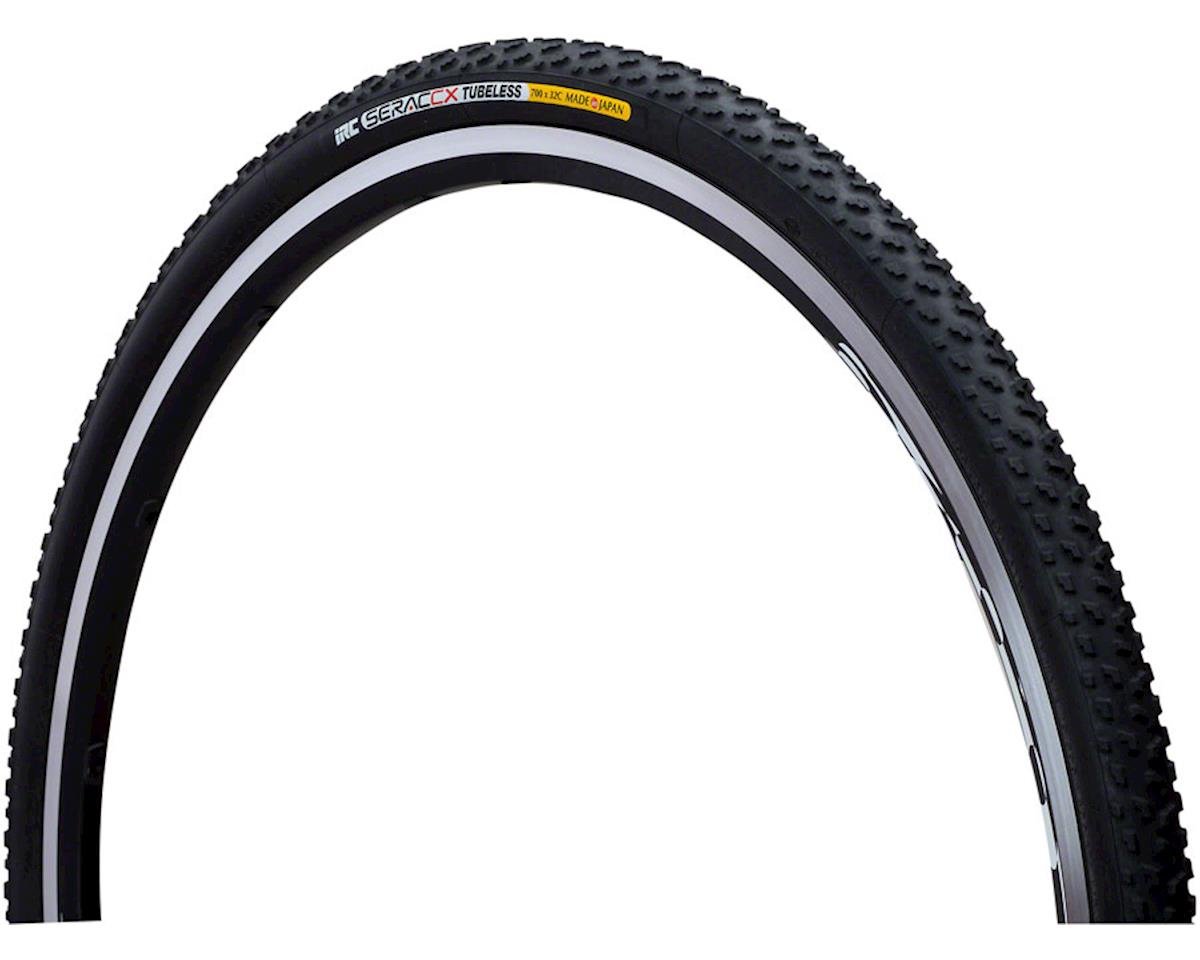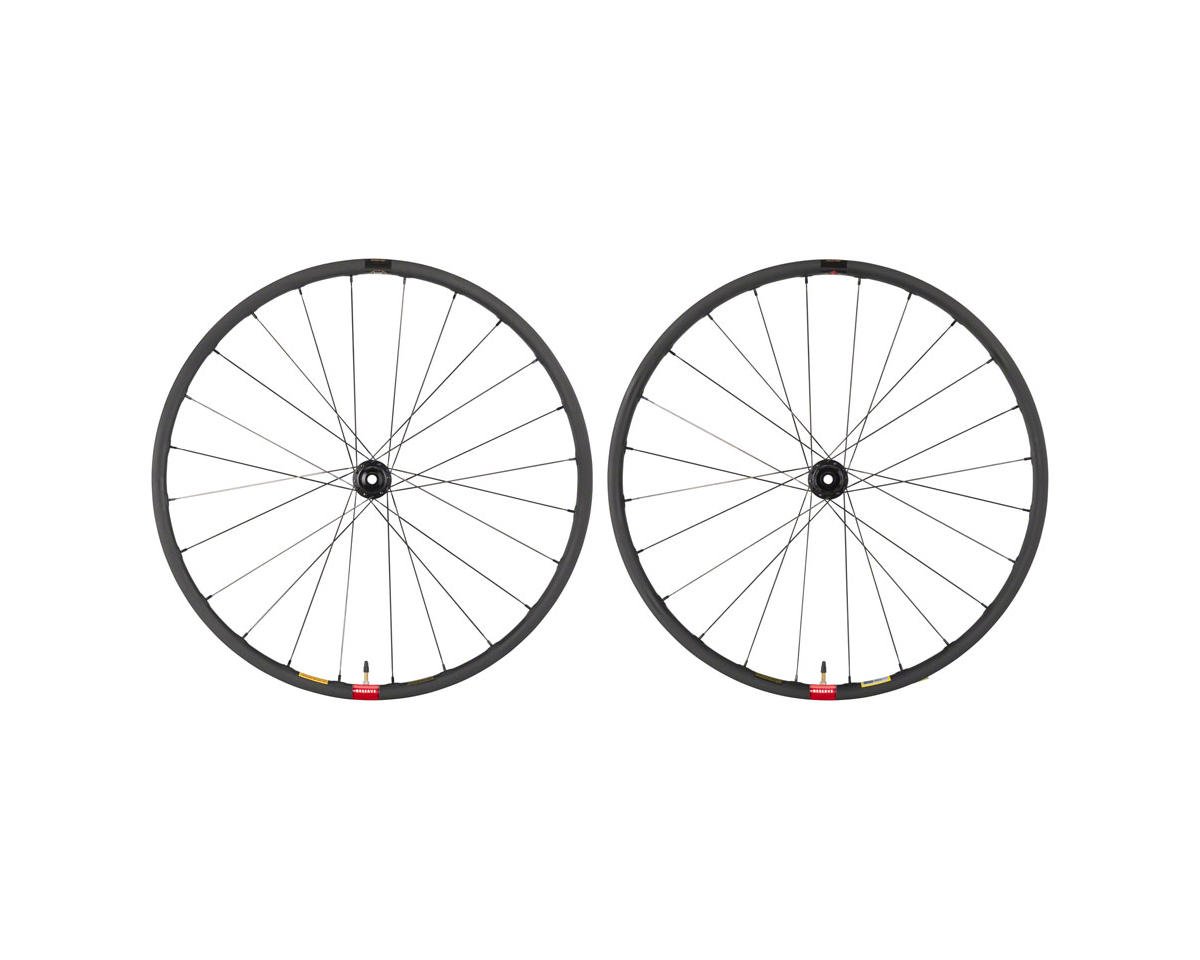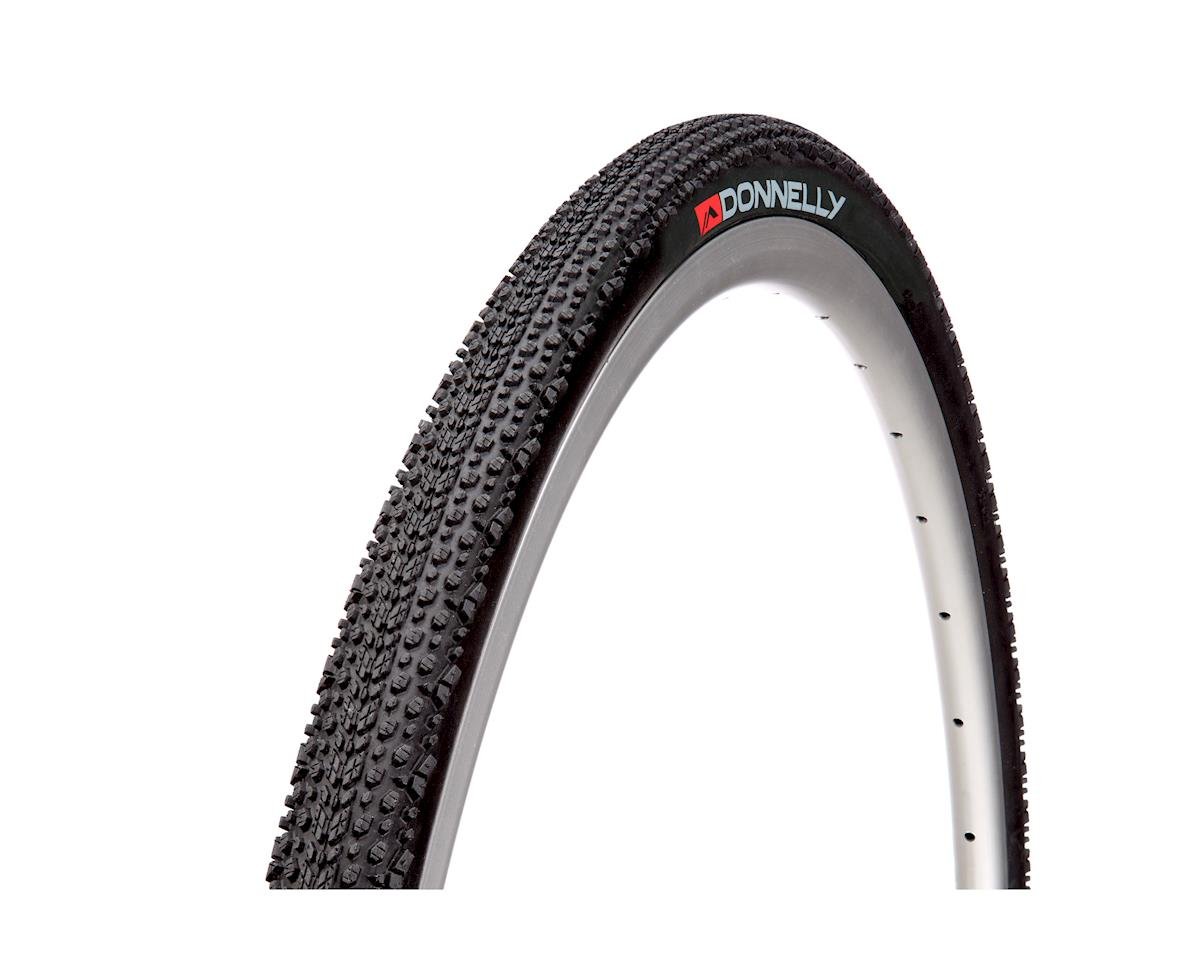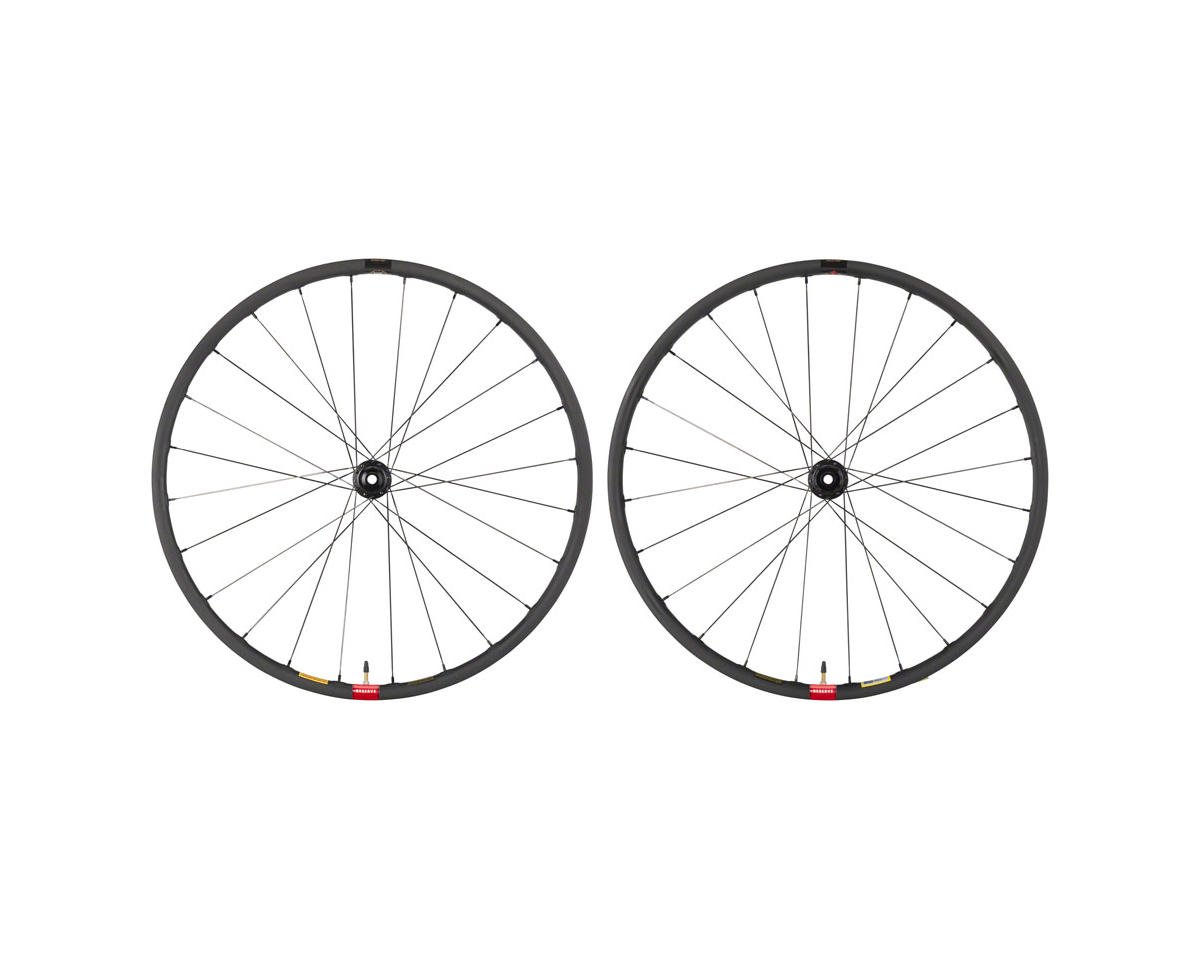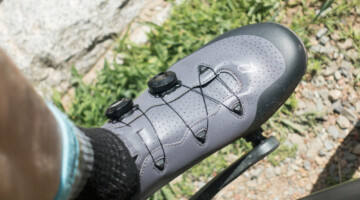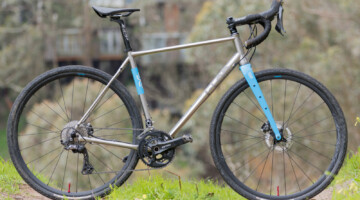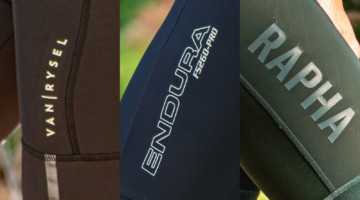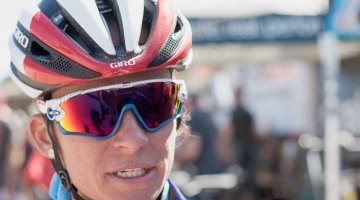Redline shows off its cyclocross expertise with a race-ready spec on the aluminum Conquest Team.
Tester and Photos: Andrew Yee
The term “production cyclocross bike” didn’t really exist here in the States just 15 years ago. Cyclocrossers needed to either convert touring or road bikes, while serious ’cross addicts had to get their hands on a purpose-built European or handbuilt frame. But Seattle-based Redline Bicycles, having built BMX frames since 1974, recognized the sport’s growth and potential and built 20 prototype cyclocross frames in time for the 1994 USCF Cyclocross National Championships in Seattle. Within a year, the brand had landed two national titles and by the following year, had sponsored a cyclocross team and was working on a full production ’cross bike, the Conquest.
Since then, many other companies have followed suit, but Redline has stepped up its offerings to remain at the forefront of cyclocross bikes here in the states by dramatically expanding its cyclocross lineup from that one white Conquest bike, to no less than seven Conquest models for 2010. ’Crossers of every age, skill level and budget can find a model from Redline built for them. It’s impressive testimony to the company’s dedication to the sport, and they have countless National Championships to show for it.
Because of the proliferation of Redline bikes at all levels and regions, it’s often not the first name that comes to mind when a racer is looking for their dream race bike. But Redline aims to change that with their 2010 Conquest Team. After riding far more expensive and exotic ’cross bikes, would their top-of-the-line model get our hearts racing? [Ed. note, the 2011 Team kept the same frame materials but received an updated geometry with .5 cm shorter chainstays and a 7 cm bottom bracket drop. For 2012 the Conquest Team and Conquest Pro move to a carbon frame]
The Frame
The 2010 Conquest Team features a double-butted 7046 aluminum frame that, at first glance, looks pretty plain vanilla with its level top tube and modest tube diameters. Redline used scandium-enhanced aluminum tubing in previous Team models, but switched to 7046 tubing to hit a price point. Tim Rutledge, Redline’s resident cyclocross guru, says the frame didn’t gain an ounce and rides just the same. One can’t help but wonder, if that’s the case, whether the premium paid in past years for scandium was worth it?
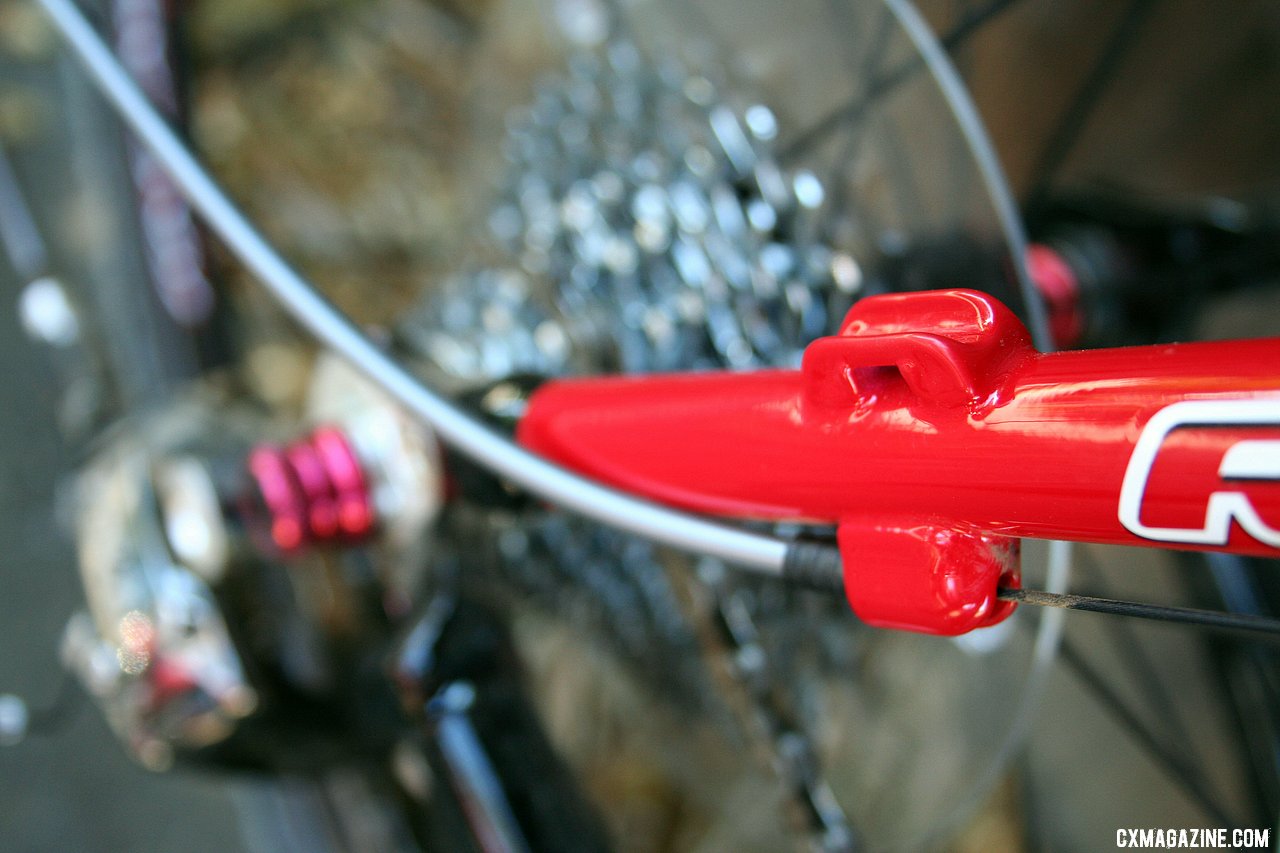
Redline gives you full housing or standard housing braze-ons choices for the rear derailleur. © Cyclocross Magazine
There are countless aluminum cyclocross frames on the market, and it’s not until you look closely that you see the value in Redline’s long and intimate involvement in the sport. It’s the frame’s small features that are worth recognition. The underside of the top tube is flattened for shouldering comfort, and the down tube is slightly triangulated, creating a shape that’s easy to pick up and easy on the forearm for racers who portage their bikes in this style. While such tube shapes are increasingly becoming status quo, it’s the frame’s CNC-machined drive-side chainstay that provides both chainring and mud clearance, as well as cable housing fittings that allow full rear cable housing from shifter to derailleur for a sealed system that indicates the bike is ready for serious Pacific Northwest mud.
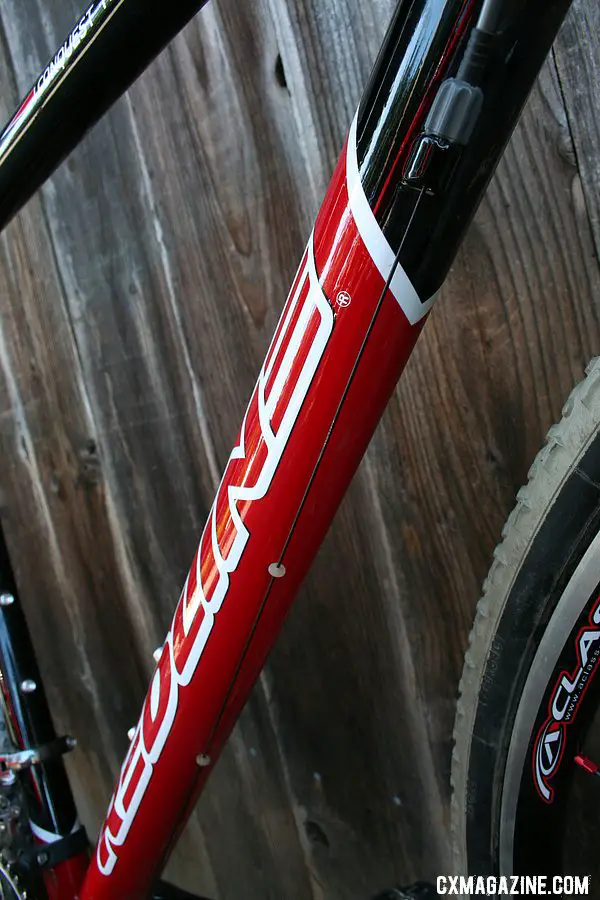
Redline Conquest Team features unique, low-profile, downtube diagonally-routed front derailleur cable. © Cyclocross Magazine
Even the front derailleur cable routing is unique. The cable runs along the down tube, but unlike most bikes, the cable housing stop for the front shifter is on the right side of the down tube but then the cable runs diagonally under the down tube towards the left side of the bottom bracket. Such a subtle modification has some real benefits: the housing has a shallower bend for less friction and kinking and fewer broken ferrules. But the biggest benefit is that the shifter cable stays very tight to the tube and is angled away from your hand, preventing your fingers, gloves or jersey from getting tangled in it when picking up or setting down the bike by the down tube.
Bottle, rack and fender mounts are provided on the frame, should you want to commute or do a bit of touring. Steering is handled by a Redline carbon cyclocross fork, complete with a carbon steerer.
There’s nothing too extreme about Redline’s geometry. Our 56cm test bike features a bottom bracket height and top tube length of 28.5cm (6.5 cm drop) and 56.5cm, respectively, with quite standard 73-degree seat tube and 72-degree head tube angles. Head tube length is a moderate 14.1cm. The chainstays are a bit on the longer side, at 43.5cm. That’s shorter than the Leopard bike (reviewed in Issue 5) but longer than most. Combined with the machined chainstay, the rear of the bike offers gobs of mud clearance—as you might expect from a company based in Seattle.
The Build
Rutledge agonizes every year on the specs of his ’cross bikes, and the former national champion’s attention to the small details results in an impressive, race-worthy spec with parts that I’d likely choose for my own personal bike. The Team model switches from Ultegra to SRAM Force for 2010, and the new Force helps shave off more than a pound from last year’s model. Beyond the Force shifters and a Redline fork, carbon is eschewed for aluminum for almost all components, but Redline still selects alloy components that prioritize weight savings and reliability. The Ritchey WCS cockpit and seat post, TRP alloy adjustable EuroX brakes and FSA Energy alloy cyclocross crankset are some of the lightest available and yet instill a bit more confidence that things will hold up after a crash. (Ed. note: we did crash…and the parts did survive.)
The A-Class tubeless-ready wheels could be the biggest story of the spec. These are finally enabling Redline customers to roll out of the store without inner tubes. The Conquest Team has long come equipped with the Hutchinson Bulldog tubeless-ready tires, but the previous model’s wheels still required tubes. Is the technology ready for stock bikes? We’d soon find out. But the wheels, with or without tubes, are lighter than most OEM wheels at 1540 grams.
Gearing? No 50/34 compact rings here. Redline chooses the versatile 36/46 combination with a wide-range 11-28 SRAM PowerGlide cassette. The crankset and gear choice are smart and versatile; on trail rides, in races and on the road, I could always find the necessary gear. For racing days, you may want something tighter, but it’s the perfect training cassette for anyone who rides a variety of terrain. Bravo to Redline for realizing 50/34 rings won’t cut it—but would we really expect anything less? To keep this gear turning, Redline also includes a Third Eye chain watcher. Now that’s a nice touch.
The Ride
Out of the box, the first thing I noticed is how little time I needed to get comfortable on the Conquest Team. Set the saddle height, drop the stem a bit, throw on some pedals and it was off to the races, literally. At the end of my first NorCal race, it wasn’t until I looked down that I remembered I was on a test bike. The geometry and materials were different from my personal bikes, but in terms of handling, stiffness and components, everything just worked and I was able to focus on the race. Now I realize that doesn’t help a reader much, so I’ll try to translate that. In rough terrain, the Redline tracked predictably, wasn’t teeth-shatteringly stiff and didn’t require the attention that more aggressive bikes do. Furthermore, with the moderate power of the EuroX brakes, the fork was stout enough to avoid unnerving shudder.
Through corners, it wasn’t like a crit bike, but was tolerant of some steering correction mid-corner and didn’t have me constantly worrying about clipping pedals with sudden rises or roots. For the increasingly common fast ‘cross course, I might opt for a tighter rear triangle and tad lower bottom bracket if this was my race-only bike [Ed. note: These wishes came true for the 2011 model], but I believe the beauty of a ’cross bike is its go-anywhere nature, and for both racing and some trail riding, Redline got the geometry just about perfect.
Aluminum gets a bad rap for having poor ride qualities, but the Redline does its best to disprove it. The frame is stout under power, and paired with the FSA crankset, gave me no hint of chain rub due to frame flex. But it certainly does not feel like a bike that has prioritized stiffness at all costs. On the road or on the trail, it held its line well in corners, felt great in sprinting and didn’t transmit every single vibration or pebble to my rear end. Of course, it’s our firm belief that a good set of tires and the right pressure will do a lot more to improve the ride of a bike than a frame’s material, but the Conquest Team would be complemented by a nice set of supple tubulars, rather than requiring them for a tolerable ride.
Redline deserves a lot of credit for assembling a parts package that is race-ready and avoids upgrade urges, but even with all of Redline’s experience, the Conquest Team still has a few small flaws. While the SRAM Force drivetrain performs well in all conditions and keeps the bike’s weight down, the levers need a small ring trim, and the shift lever can get stuck on the shallow-drop Ritchey bar during braking.
Here at Cyclocross Magazine we’re firm believers in using only two-bolt seat posts for cyclocross, as notched posts have a habit of slipping with a botched remount. Redline obeys our rule with a nice, lightweight alloy two-bolt Ritchey WCS post, but the bolts are aligned in the wrong direction—on each side of the post, not front and back. Why does this matter? My inevitable botched landing on the saddle during a Wednesday night practice race quickly had the saddle pointing towards the moon. Thankfully, many of you may be lighter or more accurate in your landings, and if not, a seat post is easy and relatively affordable to replace.
Our final gripe actually deserves some praise. We’re big fans of running clinchers tubeless in cyclocross, and Redline has long supported this option, even outfitting its sponsored racers with Hutchinson Bulldog tires set up tubeless on Shimano’s Dura-Ace tubeless-ready wheels. But as we’ve indicated in previous tests, we have not been able to get the tire pressure as low as we’d like with this setup. Redline has heard the complaints, sought more reliable setups and after finding and testing the A-Class 730 tubeless-ready wheels, is shipping its bike without inner tubes. With the new A-Class wheels, dealers are supposed to seal the tires up with a can of Hutchinson Fast’Air Sealant, and then send the rider off to the races.
We were excited to see if the setup would yield the Holy Grail of predictable cornering and reliable, low pressure riding without burping air. And while it appears the A-Class wheels seal better than the Shimano wheels with Hutchinson tires, the combination still doesn’t offer the low-pressure no-burp reliability we’ve come to expect with tubeless setups using NoTubes rims or conversion kits with standard rims and other tires [Ed. note: Hutchinson has since released its carbon bead version of its tubeless Bulldog and Piranha cyclocross tires, which we’ve had much success with]. We won’t rehash all the variables that go into a reliable tubeless system (search our website for “Going Tubeless” for all you need to know), but there are several simple solutions that worked well for us. Either use a different, tighter-fitting tire and different sealant, or just add a pair of tubes and be on your way (also see our review of the A-Class 730 wheels in our comprehensive wheel review in issue 8).
The Verdict
We’re fortunate enough to have a fleet of review and personal ’cross bikes on hand—something that ups the level of scrutiny when it comes to our bike reviews. Redline’s experience in cyclocross led to a bike that avoids major flaws in components or design that would have kept it grounded in the back of the garage.
In true testimony of how well thought out the Conquest Team is, more often than not this season I found myself reaching for it over more expensive and exotic rides. Whether I was lining up for a local race, heading to practice or just going for a ride, the Redline Conquest Team was an easy choice. I knew the gearing would be right, I wouldn’t drop a chain, mud clogging wouldn’t be an issue and handling would be predictable. If the number of rides and races we put on a test bike is any indication of how much we like a bike, then the Conquest Team can safely claim to be one of our all-time favorites.
Psyched:
- Value-conscious buyers who believe $3k should mean no upgrades are necessary (beyond inner tubes)
- Weight weenies and mud lovers
- Serious racers who value the flexibility of bottle, fender and rack mounts
Bummed:
- Belgianophiles
- Carbon addicts
- Bike geeks who need an excuse to upgrade Parts
The Specs:
Bike: Redline Conquest Team
Sizes: 44, 48, 52, 54, 56 (tested), 58, 60cm
Frame: 7046 double-butted alloy, CNC machined chainstay
Fork: Redline RCT Full Carbon, with eyelets
Headset: FSA Orbit X-CX, with hanger, 1-1/8”
Wheelset: Alex A-Class EXA, 20h front, 24h rear
Tires: Hutchinson Bulldog 700 x 34c folding clinchers
Shifter: SRAM Force 10sp
Derailleurs: SRAM Force
Crankset: FSA Energy Compact, 36/46T CNC rings, FSA MegaExo 68mm bottom bracket
Cassette: SRAM PG 1070 11-28T 10sp
Brakes: TRP EuroX, Adj. Pads, Stainless Hardware
Handlebar: Ritchey WCS Classic Road
Stem: Ritchey WCS 4 Axis
Seatpost: Ritchey WCS 27.2 x 350mm
Saddle: Selle Italia Filante SE
Pedals: None
Weight: 17.8lbs (without pedals), 11.6lbs without wheels
MSRP: $2999
Country of Origin: Taiwan
More info: Redlinebikes.com













